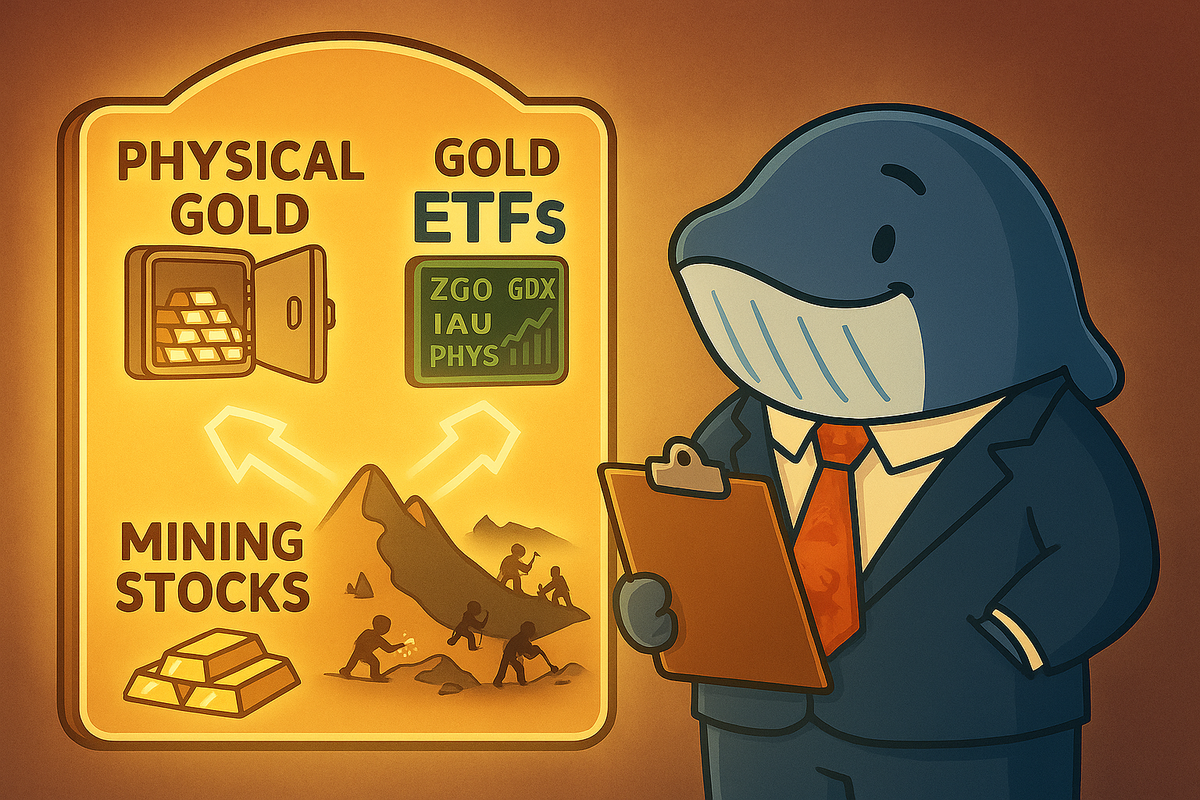🐋 ETFs vs. Physical Gold vs. Mining Stocks - What’s the Smartest Exposure?

Gold has outperformed other major asset classes at key moments in history, particularly during times of uncertainty. But “owning gold” can mean a lot of different things these days. Investors can choose physical bars, gold ETFs, mining stocks, and even newer digital options. The real question for modern investors is: which type of gold exposure makes sense for you?
Let’s break down your options.
Physical Gold - The Classic Store of Value
Physical gold means actual coins, bars, or bullion stored in a vault.
Advantages:
- No counterparty risk.
- Tangible asset that’s private and sits outside the financial system.
- A tried-and-true crisis hedge.
Drawbacks:
- You have to worry about secure storage, whether at home or with a provider.
- It’s not especially liquid-selling can take time.
- You don’t get any ongoing income or yield from holding physical gold.
Best for: Investors looking for maximum protection against currency devaluation and financial system tail risks-people who truly want something they can “hold” if the world goes sideways.
Gold ETFs - The Convenient Alternative
Gold ETFs, such as GLD or IAU, track the price of gold and trade just like stocks.
Advantages:
- Easy to buy or sell on stock exchanges-just a few clicks and you’re done.
- Low fees and tight trading spreads.
- No hassle of physical storage.
Drawbacks:
- You don’t actually own gold; you own a paper claim to it.
- There’s still some risk tied to the fund structure and the custodian bank.
- Depending on where you live, there can be tax quirks specific to these funds.
Best for: Investors who want a cost-effective, highly liquid way to include gold in their portfolios-without dealing with bars and safes.
Gold Mining Stocks - High Risk, High Reward
Owning shares in gold mining companies-or gold miner ETFs like GDX-gives exposure not just to the price of gold, but also company performance.
Advantages:
- The upside can be significant if gold prices surge since miners often move more than the metal itself.
- Some miners pay dividends.
- Company-specific wins-like major gold discoveries or operational improvements-can pay off.
Drawbacks:
- Operational and management risks can cause miners to underperform gold itself.
- Stocks are subject to broader market volatility-you’re holding part of the equities market, with all that entails.
- Debt, political risk, and other company issues can also bite.
Best for: Risk-tolerant investors looking for higher growth potential, or those who want both gold and equity upside.
So, What’s the Smartest Exposure?
There’s no one-size-fits-all answer-it truly depends on your goals. Here’s a cheat sheet to help you match your aim to your gold strategy:
- If your goal is to hedge against crisis - go with physical gold.
Tangible, time-tested, and no counterparty risk. - If you want liquid and passive exposure - choose gold ETFs.
Easy to buy/sell and track gold prices with minimal effort. - If you seek growth potential - consider mining stocks or ETFs.
Higher risk, but with the upside of company performance. - If you prefer a balanced mix - use a core-satellite strategy.
Hold some physical gold, ETFs, and a small % in miners.
Final Thoughts
Gold isn’t just a shiny metal you stash away-it’s a strategic tool. The smartest investors know why they own gold, what form they hold it in, and exactly how it fits with the rest of their portfolio. Before you buy a coin, a fund, or a mining stock, be honest: what role do you want gold to play? When you answer that, you’ll know which path to take-and you’ll make your portfolio stronger for it.
